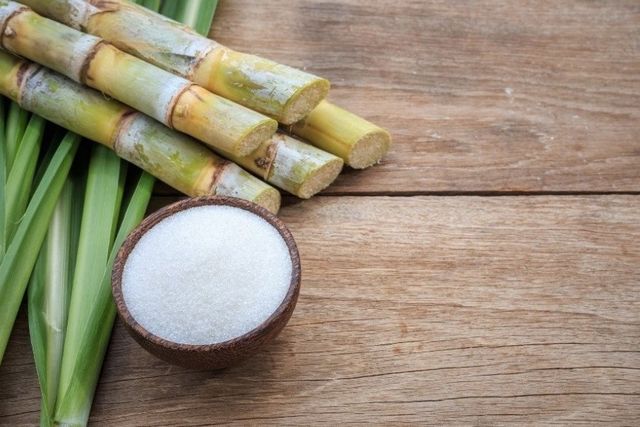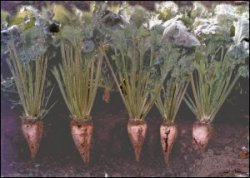The Excellent Argument: Beet Sugar Vs Walking Cane and Their Influence on Health
The ongoing discussion surrounding beet sugar and walking cane sugar raises essential concerns regarding their respective wellness effects and broader effects for customer options. While both sweeteners share a comparable chemical structure, their origins and processing methods may affect not only nutrition yet also ecological sustainability. As health-conscious individuals consider the benefits of each alternative, the implications of pesticide direct exposure and agricultural techniques enter into focus. This conversation invites us to take into consideration not simply the sweetness we pick, yet the far-ranging effects of those selections on our health and the world. What might this mean for future consumption patterns?
Overview of Sugar Resources
Sugar, an extensively taken in sweetener, mostly originates from 2 main resources: sugar beetroots and sugar cane. Sugar walking stick thrives in exotic and subtropical climates, with significant manufacturers including Brazil, India, and China.
Alternatively, sugar beetroots are mostly expanded in temperate areas, with substantial manufacturing in countries such as the United States, France, and Germany. The beetroots are gathered from the ground, sliced, and based on a procedure that converts the removed juice into granulated sugar. While both sugar sources ultimately yield sucrose, their farming practices, refining techniques, and geographic circulations differ substantially.
These differences can influence not just the environmental influence of sugar production however likewise the financial facets of sugar prices and trade. Recognizing the origins of these sweeteners is vital for consumers and policymakers alike, as it lays the foundation for educated discussions regarding their health ramifications and sustainability.
Nutritional Comparison
When taking a look at the dietary accounts of beet sugar and walking stick sugar, both sources share a similar make-up as they mostly contain sucrose. Sucrose is a disaccharide, made up of glucose and fructose, and is accountable for the sweetness related to both sugars. The refining processes for both beetroot and cane sugar return products that are predominantly pure sucrose, with minimal traces of vitamins, minerals, or other nutrients.
In regards to calorie content, both beet and walking stick sugars provide roughly 4 calories per gram. Neither kind of sugar provides significant nutritional advantages past energy arrangement, as they do not have important vitamins or minerals. The existence of trace elements, such as magnesium, potassium, and calcium, can differ slightly in between the 2, primarily due to the agricultural practices and dirt problems in which they are expanded.
In addition, the glycemic index values of beet sugar and walking cane sugar are equivalent, showing similar impacts on blood sugar degrees. Overall, from a nutritional viewpoint, beetroot and cane sugars are functionally equal, contributing largely to calorie intake without supplying considerable wellness advantages over one another.
Health Ramifications
The health effects of consuming beetroot sugar and cane sugar warrant mindful factor to consider, particularly provided the rising prevalence of sugar-related health issues. Both kinds of sugar contribute similar caloric worths and can bring about raised dangers of excessive weight, kind 2 diabetes, and cardio illness when eaten over. The body metabolizes both sugars right into glucose, which can create spikes in blood sugar level levels, resulting in insulin resistance in time.
While there is continuous dispute regarding the glycemic index of these sugars, researches suggest that both can adversely affect metabolic wellness if eaten in big amounts. beet sugar vs cane. Additionally, the potential existence of pollutants in beet sugar, such as chemicals from traditional farming practices, elevates additional health worries. Conversely, walking stick sugar, specifically when minimally processed, may offer a somewhat extra beneficial profile because of its all-natural state
Moreover, the intake of added sugars, no matter the source, is connected to negative health and wellness end results, including oral concerns and fatty liver condition. Consequently, small amounts is important, and people must be mindful of their complete sugar intake from all resources, eventually focusing on entire foods over added sugars for ideal wellness outcomes.
Environmental Influence
Understanding the health and wellness implications of beet and walking stick sugar also brings about an assessment of their ecological influence, which can considerably influence farming sustainability and environmental equilibrium. Both sugar sources have distinct environmental footprints, shaped by their growing techniques and geographical requirements.

In comparison, beetroot sugar is typically expanded in pleasant environments and frequently entails varied plant rotations. This practice can boost dirt wellness and reduce reliance on chemical inputs. Extensive beet farming can also lead to nutrition deficiency and parasite stress if not handled sustainably.
Both sugar types present challenges and chances for ecological stewardship. Advertising lasting farming techniques and accountable sourcing can why not check here reduce their impacts, ensuring that sugar manufacturing straightens with environmental preservation and long-lasting food safety and security.
Consumer Preferences
Amid growing recognition of health and wellness and ecological problems, consumer choices for click for more info sugar kinds are progressively influenced by understandings of health advantages, sustainability, and honest sourcing. Beetroot sugar and walking stick sugar each existing one-of-a-kind features that attract different customer demographics.
Health-conscious consumers frequently look at the dietary accounts of these sugars, seeking choices regarded as less processed or even more natural. Walking stick sugar, typically considered as the typical sweetener, is occasionally preferred for its viewed purity and simpleness. On the other hand, beetroot sugar, which is frequently stemmed from genetically modified crops, deals with apprehension amongst those worried concerning GMOs.
Sustainability is one more considerable element affecting consumer selections. As understanding of farming practices grows, several customers go with items that straighten with eco-friendly farming techniques. Walking stick sugar production, especially when sourced from lasting farms, can attract eco-conscious customers.
Moral sourcing plays an essential role also, with customers significantly preferring items that sustain reasonable labor methods. Accreditations such as Fair Trade can enhance the beauty of walking cane sugar out there. Eventually, consumer preferences are shaped by an intricate interplay of wellness, ecological, and ethical factors to consider, driving demand for both beet and walking stick sugars in diverse markets.
Final Thought
Finally, the debate in between beet sugar and walking stick sugar incorporates different variables, consisting of nutritional accounts, health implications, and ecological effects. beet sugar vs cane. While both sugars mostly are composed of sucrose and exhibit similar caloric content, problems concerning pesticide use in beet sugar and the eco-friendly impact of walking cane sugar monoculture warrant careful factor to consider. As customers increasingly prioritize sustainability and health and wellness, informed selections relating to sugar usage come to be crucial in promoting click here for more general wellness and environmental stewardship

Comments on “Beet Sugar vs Cane: Which One Is Better for Your Health and Diet?”